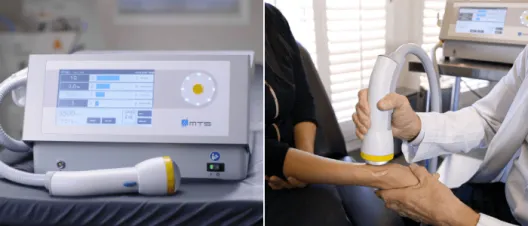Pain management is a key aspect of healthcare, and finding the right method to manage pain can truly be a life-saver. With advanced medical technology, the options for pain management are now more diverse than ever. Softwave therapy has emerged as a popular option that has been utilized to treat various types of pain and physical ailments. In this blog, we’ll be discussing the differences between Softwave Therapy and traditional pain management methods so that you have a clear idea of what they entail.
Softwave Therapy is a relatively new technique in the world of pain management. However, it has gained popularity in the U.S over the past few years because of its effectiveness. This therapy is a non-invasive technique that uses shockwaves to treat acute and chronic pain. Softwave Therapy works by emitting high frequency, low energy shockwaves that penetrate deep into the affected area to stimulate healing. Traditional pain management techniques, on the other hand, require techniques such as surgery or pain medication. The use of opioids, in particular, has been a standard method of treating pain, but non-narcotic alternatives are now being sought out with increasing frequency.
Like any other medical treatment, Softwave Therapy does have its side effects. However, these side effects are mild and are nothing compared to the ones you would normally experience with traditional pain management methods. In most cases, patients experience mild discomfort for a few hours post-treatment. Nausea and headaches may occur, but these typically resolve within a day or two. The most common side effect of traditional pain management methods, particularly when it involves surgery, is the risk of complications, which are often long-lasting and can require additional medical intervention.
Softwave Therapy is not only effective but also versatile. It can be used to treat a variety of conditions such as sports injuries, arthritis, and post-surgical pain. It’s particularly suitable for chronic conditions that may need an extended period of treatment to manage the pain. On the other hand, traditional pain management techniques can provide quick relief but are often only a temporary solution that requires repeated application. Long-term use of some pain medications can also result in the need for increased dosage as your body grows accustomed to the treatment.
In terms of cost, Softwave Therapy requires a higher initial investment compared to traditional pain management methods. However, this investment needs to be weighed against the long-term savings from reduced medication and surgeries. In some cases, insurance may cover the cost of Softwave Therapy if it is deemed a necessary medical treatment.
Softwave Therapy and traditional pain management methods both have their advantages and drawbacks, and ultimately, the decision to use one method over the other depends on the patient’s individual needs. It’s important to consult your medical practitioner when deciding on the best approach to take. Though newer, Softwave Therapy has shown exciting potential, and many patients who’ve tried it are reporting very positive outcomes. If you’re in Buffton, SC, Hilton Head, SC, or any of the surrounding areas, we at Coastal Carolina Comprehensive Treatment Center are always available to discuss what treatment options may be best for you.

